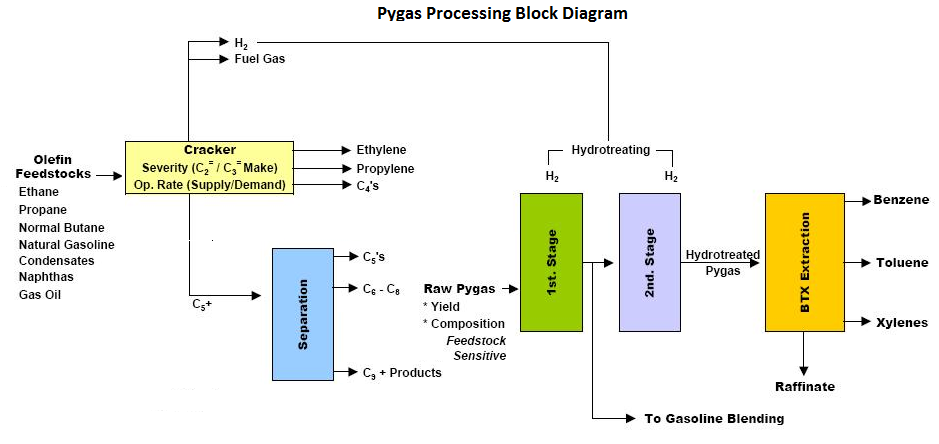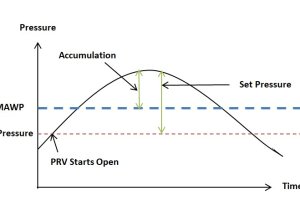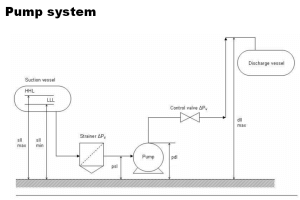Analysis of Coal for Gasification
Since coal is a widely used feed for gasification, knowledge of the different ways to analyse coal and interpretation of that analysis becomes important. The main purpose of coal analysis is to determine the rank of the coal along with its intrinsic characteristics.
Coal Properties
There are four types of coal present in the world: Anthracite, Bituminous, Sub-bituminous and Lignite. Each type of coal has a certain set of physical parameters which are mostly controlled by moisture, volatile content (in terms of aliphatic or aromatic hydrocarbons) and carbon content.
Moisture content of coal
Groundwater and other extraneous moisture is known as adventitious moisture and is readily evaporated. Moisture held within the coal itself is known as inherent moisture and is analyzed. Moisture may occur in four possible forms within coal:
- Surface moisture: water held on the surface of coal particles or macerals
- Hydroscopic moisture: water held by capillary action within the microfractures of the coal
- Decomposition moisture: water held within the coal’s decomposed organic compounds
- Mineral moisture: water which comprises part of the crystal structure of hydrous silicates such as clays.
Volatile Matter
Volatile matter in coal refers to the components of coal, except for moisture, which are liberated at high temperature in the absence of air. This is usually a mixture of short and long chain hydrocarbons, aromatic hydrocarbons and some sulfur. The volatile matter of coal is determined under rigidly controlled standards. In Australian and British laboratories this involves heating the coal sample to 900 ± 5 °C (1650 ±10 °F) for 7 minutes in a cylindrical silica crucible in a muffle furnace. American Standard procedures involve heating to 950 ± 25 °C (1740 ± 45 °F) in a vertical platinum crucible.
Ash content
Ash content of coal is the non-combustible residue left after coal is burnt. It represents the bulk mineral matter after carbon, oxygen, sulfur and water (including from clays) has been driven off during combustion. Analysis is fairly straightforward, with the coal thoroughly burnt and the ash material expressed as a percentage of the original weight.
Fixed Carbon content
The fixed carbon content of the coal is the carbon found in the material which is left after volatile materials are driven off. This differs from the ultimate carbon content of the coal because some carbon is lost in hydrocarbons with the volatiles. Fixed carbon is used as an estimate of the amount of coke that will be yielded from a sample of coal.
Coal Proximate Analysis
The objective of ultimate coal analysis of coal is to determine the amount of fixed carbon (FC), volatile matters (VM), moisture, and ash within the coal sample. The variables are measured in weight percent (wt. %) and are calculated in several different bases. AR (as-received) basis is the most widely used basis in industrial applications. AR basis puts all variables into consideration and uses the total weight as the basis of measurement. AD (air-dried) basis neglects the presence of moistures other than inherent moisture while DB (dry-basis) leaves out all moistures, including surface moisture, inherent moisture, and other moistures. DAF (dry, ash free) basis neglect all moisture and ash constituent in coal while DMMF (dry, mineral-matter-free) basis leaves out the presence of moisture and mineral matters in coal, for example: quartz, pyrite, calcite, etc. Mineral matter is not directly measured.
| Proximate Analysis | unit | (ar) | (ad) | (db) | (daf) |
| Moisture | (wt. %) | 3.3 | 2.7 | ||
| Ash | (wt. %) | 22.1 | 22.2 | 22.8 | |
| Volatile Matter | (wt. %) | 27.3 | 27.5 | 28.3 | 36.6 |
| Fixed Carbon | (wt. %) | 47.3 | 47.6 | 48.9 | 63.4 |
| Gross Calorific Value | (wt. %) | 24.73 | 24.88 | 25.57 | 33.13 |
Table1 – Sample results for Proximate Coal Analysis
Coal Ultimate Analysis
Similar to coal proximate analysis, the objective of coal ultimate analysis is to determine the constituent of coal, but rather in a form of its basic chemical elements. The ultimate analysis determines the amount of carbon (C), hydrogen (H), oxygen (O), sulfur (S), and other elements within the coal sample.
| Ultimate Analysis | unit | (ar) | (ad) | (db) | (daf) |
| Carbon (C) | (wt. %) | 61.1 | 61.5 | 63.2 | 81.9 |
| Hydrogen (H) | (wt. %) | 3.00 | 3.02 | 3.10 | 4.02 |
| Nitrogen (N) | (wt. %) | 1.35 | 1.36 | 1.40 | 1.81 |
| Total Sulfur (S) | (wt. %) | 0.4 | 0.39 | 0.39 | |
| Oxygen (O) | (wt. %) | 8.8 | 8.8 | 9.1 |
Table2 – Sample results for Ultimate Coal Analysis for gasification
Ash Analysis
An analysis of coal ash may also be carried out to determine not only the composition of coal ash, but also to determine the levels at which trace elements occur in ash. This data is useful for environmental impact modelling, and may be obtained by spectroscopic methods such as ICP-OES or AAS.
| Oxides | wt.% of ash (Calculated) |
Elements | wt.% of ash (Measured) |
| Na2O | 0.35 | Na | 0.26 |
| MgO | 0.48 | Mg | 0.29 |
| Al2O3 | 20.0 | Al | 10.6 |
| SiO | 74.1 | Si | 34.6 |
| P2O5 | 0.05 | P | 0.05 |
| K2O | 1.1 | K | 0.92 |
| CaO | 0.68 | Ca | 0.49 |
| TiO2 | 0.80 | Ti | 0.48 |
| Mn3O4 | 0.06 | Mn | 0.05 |
| Fe2O3 | 3.25 | Fe | 2.28 |
Table 3 – Sample results of Coal Ash Analysis




